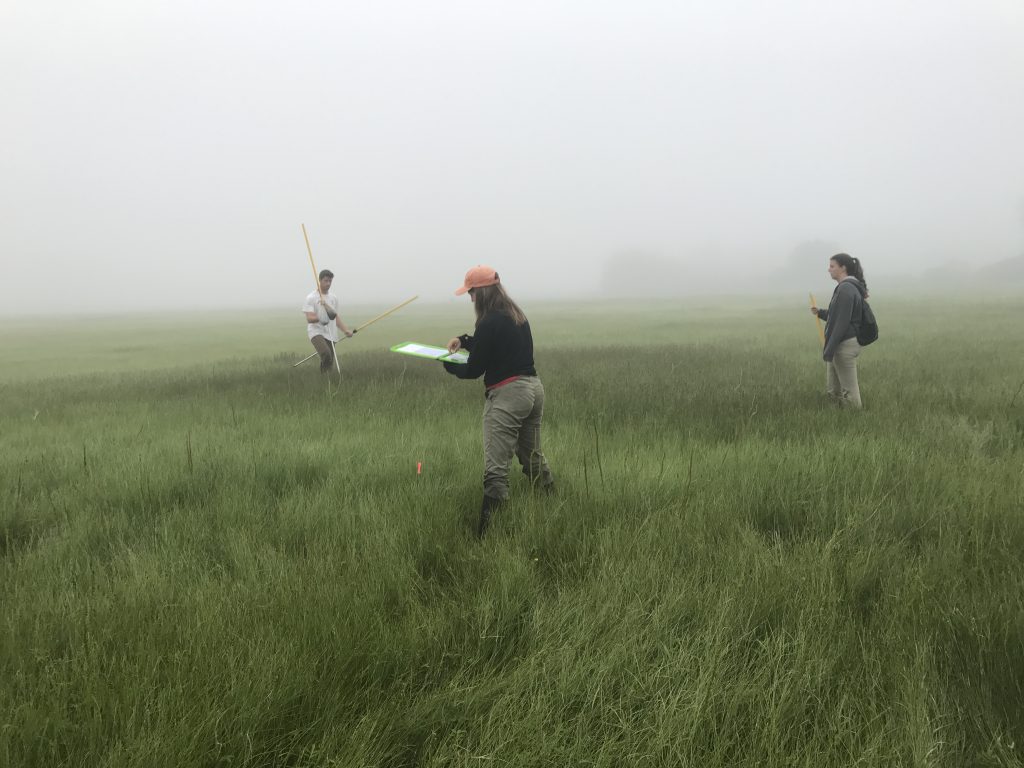Excellent training is essential both for collecting accurate data and for protecting bird safety. Most banders acquire their skills through an apprenticeship of some sort, perhaps by volunteering at a banding station or by securing a paid or unpaid internship. A few established stations offer organized classes in the field, and those can be supplemented with virtual workshops.
Volunteering
Some bird observatories and banding stations welcome both novice and experienced volunteers. Donating your time on a regular basis to a station that operates a migration monitoring, Monitoring Avian Productivity and Survivorship (MAPS), or Monitoreo de Sobrevivencia Invernal (MoSi) program is one of the best ways to gain valuable experience and become a proficient bird bander and field ornithologist.
NABC does not maintain a list of stations willing to take volunteers, but we may be able to help you locate someone near where you live. Contact the Passerine Chair for help, or use the resources below to browse possible opportunities.
Contact information about bird observatories across Canada
An interactive map about MAPS stations across the US and Canada
An interactive map about MOSI stations across Latin America
Don’t underestimate the power of Google or Facebook in your search. Sometimes searching for “bird banding” and your home city, state, or province will point you toward news stories, events involving local Audubon societies, or demonstrations at local parks. From there, you may be able to get in contact with a local bander.

Even a misty day in the field is a great day, and there is no better way to level up your skills than to get outside and practice!
a
Internships & Seasonal Positions
Working as an intern or field tech, typically for a short-term or seasonal project, can develop a variety of field ornithology skills including mistnetting, banding, tagging with auxiliary markers, and blood sampling. Many short-term positions are advertised on the Ornithology Exchange Job Board and on the Texas A&M Department of Wildlife and Fisheries Sciences Job Board.
Field Classes and Workshops
Several NABC certified trainers offer in-person classes and workshops. NABC has developed criteria whereby a class can be classified as an NABC-approved Training Session. Such sessions must be taught by at least one NABC trainer, must pledge to follow NABC best practices, and must have a well-developed curriculum. Students in NABC-approved classes gain criticial skills that can be documented as part of the training process, and they receive a certificate acknowledging their participation. Organizations recently offering field classes carrying NABC approval include:
Braddock Bay Bird Observatory
Klamath Bird Observatory
Observatório de Aves de Mantiqueira
Powdermill Avian Research Center
Toucan Ridge Ecology and Education Society
Some NABC certified trainers teach classes that do not carry NABC approval, typically because they have never sought it. There are many excellent classes offered at sites across the US, Canada, and Central and South America, and prospective students should not view NABC approval – or the lack thereof – as making a statement about the quality of a course except insofar as sessions carrying NABC approval have been documented to meet minimum standards of content and expertise.
If you are are a certified trainer interested in gaining NABC approval for your classes and workshops, fill out our Application for Workshop Approval.
Online Learning
While some concepts can be learned or refined through online instruction, many field techniques require hands-on practice under the close supervision of a skilled bander. Watching a video about skiing doesn’t give you the ability to safely make it to the bottom of a slope; neither does watching a video about using mist nets give you the ability to safely extract birds. Nevertheless, digital presentations about permitting, aging and sexing, molt, and other topics may serve a useful role in developing and reinforcing critical skills and knowledge.
Training module on migratory birds in research: This PDF presentation by the Canadian Wildlife Service and Canadian Council on Animal Care in Science provides an introduction to the legal, ethical and safety considerations for those working with migratory birds in research and conservation.
Fundamentals of Bird Banding: Available through the US Fish and Wildlife Service’s National Conservation Training Center (NCTC) website, this set of presentations and videos is based on the North American Banding Council Passerine Banding Curriculum. The “classroom” style course provides instruction in fundamental aspects of small bird capture and handling, banding, and ageing-sexing techniques. It is intended to be combined with experiential learning and practice during subsequent banding operations. This course was developed by Klamath Bird Observatory with support from Environment Canada, the US Fish and Wildlife Service, and NABC.